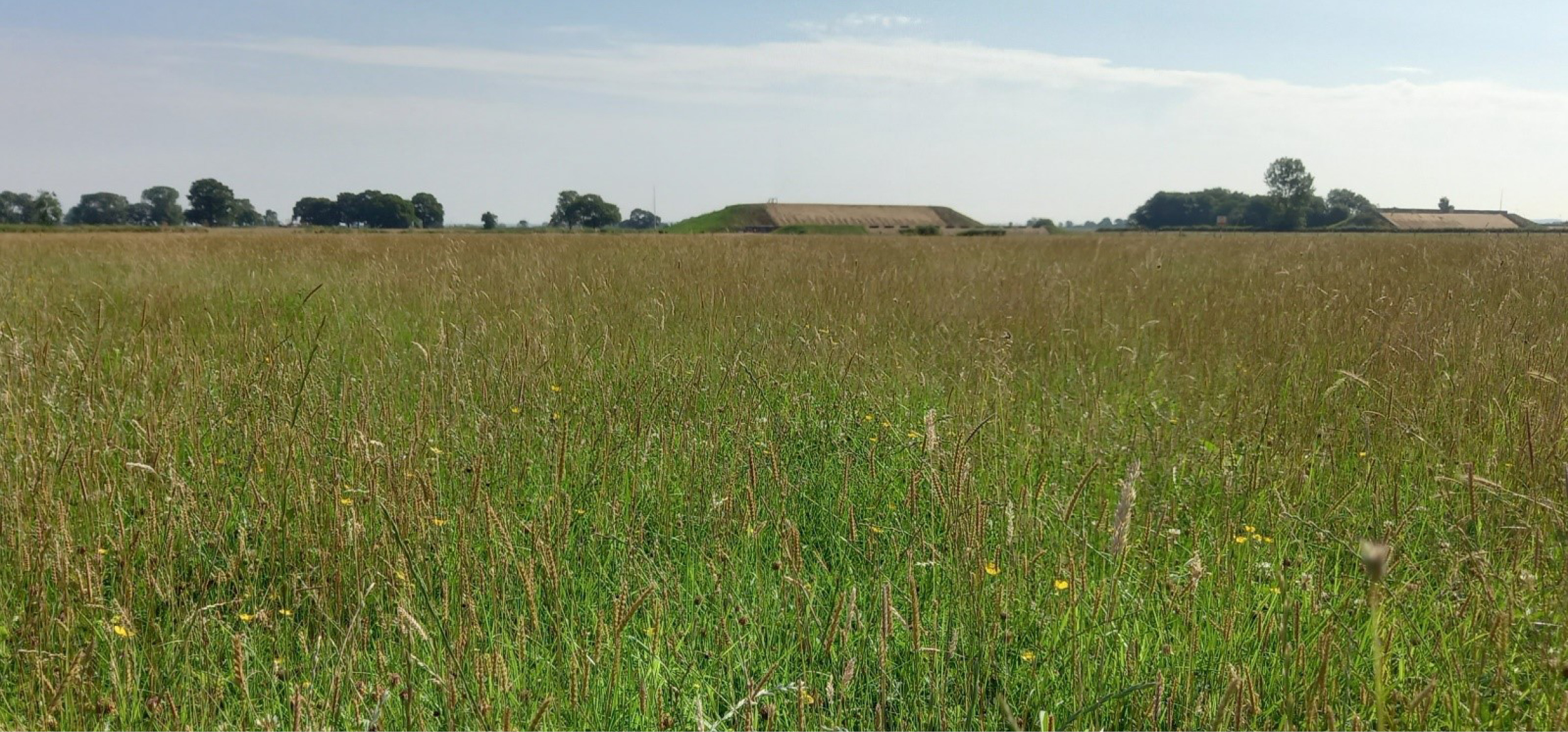Celebrated on the 28 July, World Nature Conservation Day acknowledges that a healthy environment is the foundation for a stable and healthy society and to ensure the wellbeing of present and future generations, we all must participate to protect, conserve and sustainably manage our natural resources.
Stephanie Hancock, Team Leader in the East, explains how farming and military training has helped to protect and conserve the diverse ecosystem of Beckingham Training Area, the landscape of which successfully supports an abundance of flora and fauna and has been left relatively unchanged through history.

Pictured above: The Hay meadows at Beckingham Training Area are cut once a year to maintain floral diversity.
“Beckingham Training Area is a small site located in the East Region on the Nottinghamshire, Lincolnshire border consisting of 1,500 acres. There is some underlying earthwork archaeology around the training area showing that this site has been used for agriculture for hundreds of years. The fabulous examples of medieval open field systems, known as Ridge and Furrow fields, can be seen when passing through the area.
“The training area consists of fields surrounded by hedgerows criss-crossing the landscape and providing essential corridors for wildlife to travel between fragmented habitats. Even though Beckingham is dominated by fields we have little pockets of broadleaved and pine plantations. The broadleaved woodland species are mainly Oak and Ash and in the ground layer under these broadleaved trees we have English bluebells. The western boundary borders a large swathe of Forestry Commission land and ancient woodland which provides a mosaic of habitats.
“Like most MOD sites, Beckingham has tenant farmers who graze livestock on the site, however some of these farmers set aside fields in Spring and Summer months for pasture and hay meadows. Hay meadows are now a rare and culturally important habitat, with more than 97% of wildflower meadows lost in the post war period, according to Natural England.
“These hay meadows provide a blaze of colour and vital nectar sources for a plethora of pollinating insects. Scattered amongst a seemingly endless number of grass species is a carpet of red and white clover mingled in with splashes of yellow from meadow buttercups and lady’s bedstraw, to name a few. The pasture and hay meadows not only provide for pollinating insects such as large skipper, meadow brown butterflies, marmalade hoverfly or the mass of bees, they also provide food, shelter and nesting sites for different vertebrates and birds including important species that are on the conservation red list, for example yellow hammer, lapwing and skylarks.
“The meadows and grasslands have to be managed in a select way to prevent these areas becoming coarse and rank and lose diversity allowing succession to occur. They are to be cut, not mown, once a year – usually mid to late July for hay meadows as most flowers and grasses have gone to seed and it’s the optimum time for maintaining floral diversity in the meadows. Dry acid grassland will usually need to be cut mid to end of September – to allow late flowering species such as devils-bit scabious to seed it. The cuttings are then left for approximately a week to allow seeds to fall back into the meadow before being removed. The removal of the arisings are important to reduce the nutrients going back into the soil which will benefit unwanted dominating plants such as nettles, thistles and rank grasses.
“Livestock grazing is the most beneficial in the aftermath of the meadows being cut. Sheep and cattle graze at different levels and on different species, however, they both have similarities in the way they eat and the effect of their hooves – which helps to break down the thatch and allows seeds to reach the bare ground underneath. If grazing is not possible then the meadows can be chain harrowed to break the thatch down on a rotational basis. (If it’s a small area in your garden then a grass rake will do).
“The training area is a low level training area and the management of this landscape enables and supports changes in current and future military tactics and training methods. As well as promoting different niches and supporting a variety of living organisms.
“I feel privileged to be able to access, work and train on the different areas in the East region. To see landscapes that have remained relatively unchanged, with their unique individual landscape histories and the plethora of different flora and fauna. I have only just scratched the surface here at Beckingham and I am looking forward to seeing what else this site will provide.”
